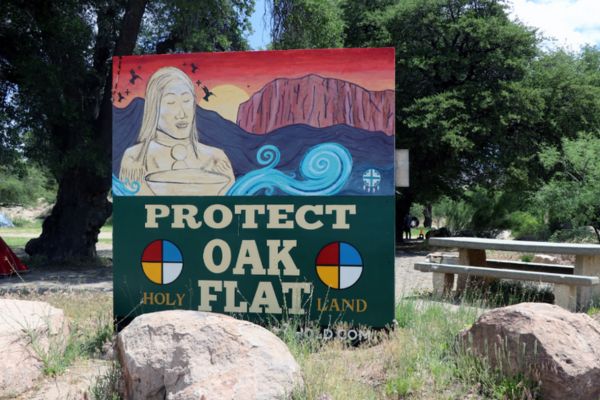
- Details
- By Native News Online Staff
The San Carlos Apache Tribe has petitioned the U.S. Supreme Court to review a decision by the Arizona Supreme Court that permits Resolution Copper Mining, LLC—a partnership of Rio Tinto and BHP—to discharge copper-contaminated water from its new mine under development into the already polluted Queen Creek.
“The Arizona Supreme Court made an egregious error when it ruled that Resolution Copper could avoid meeting the most rigorous Clean Water Act regulations,” San Carlos Apache Tribe Chairman Terry Rambler said. “The Arizona ruling could have national implications and is a decision the U.S. Supreme Court should reverse.”
The key legal issue in the Tribe’s petition, filed on September 25, is whether Resolution’s planned mine will be classified as a new source of pollution under the Clean Water Act or as an existing one.
If deemed a new source, Resolution would face the toughest Clean Water Act regulations, requiring the company to demonstrate to the Arizona Department of Environmental Quality (ADEQ) that Queen Creek could meet clean water standards despite the additional copper-contaminated discharges.
Conversely, if classified as an existing source, Resolution would be allowed to release copper-contaminated water into Queen Creek without adhering to the Clean Water Act’s strongest protections.
In June, the Arizona Supreme Court ruled that discharges from the Resolution mine would be considered an existing source of pollution. This decision was based on Resolution’s plans to reuse a small number of tunnels and shafts from the now-defunct Magma Copper Company, which ceased operations in 1996.
Chairman Rambler remarked, “It’s illogical to classify Resolution as an existing source when the majority of its mining operations are still in the planning stages and the copper lode lies a mile underground, never having been mined. The Arizona Supreme Court contorted its reasoning to assert that Resolution’s largely unbuilt operations somehow already exist.”
“It’s absurd to consider Resolution an existing source when most of Resolution’s mining operations have yet to be built and the copper lode is a mile underground and has never been mined,” Chairman Rambler said. “The Arizona Supreme Court twisted itself in knots to pretend Resolution’s mostly unbuilt mining operations somehow already exist.”
The Tribe first sued the ADEQ in 2017 over its classification of Resolution as an existing source of pollution. A Maricopa County Superior Court upheld the ADEQ’s decision, but the Tribe appealed, leading to a reversal by the Arizona Court of Appeals in 2022.
More Stories Like This
Navajo Council Committees Tackle Grazing Enforcement, Code RevisionsU.S. Must Fulfill Obligations by Protecting Programs
50 Years of Self-Determination: How a Landmark Act Empowered Tribal Sovereignty and Transformed Federal-Tribal Relations
Trump Veto Stalls Effort to Expand Miccosukee Tribal Lands
Oneida Nation Responds to Discovery Its Subsidiary Was Awarded $6 Million ICE Contracts
Help us defend tribal sovereignty.
At Native News Online, our mission is rooted in telling the stories that strengthen sovereignty and uplift Indigenous voices — not just at year’s end, but every single day.
Because of your generosity last year, we were able to keep our reporters on the ground in tribal communities, at national gatherings and in the halls of Congress — covering the issues that matter most to Indian Country: sovereignty, culture, education, health and economic opportunity.
That support sustained us through a tough year in 2025. Now, as we look to the year ahead, we need your help right now to ensure warrior journalism remains strong — reporting that defends tribal sovereignty, amplifies Native truth, and holds power accountable.
 The stakes couldn't be higher. Your support keeps Native voices heard, Native stories told and Native sovereignty defended.
The stakes couldn't be higher. Your support keeps Native voices heard, Native stories told and Native sovereignty defended.
Stand with Warrior Journalism today.
Levi Rickert (Potawatomi), Editor & Publisher


